Since October 7, 2023, the war in Gaza has unleashed devastation on an unimaginable scale, claiming over 47,000 lives, most of them women and children. Entire neighborhoods have been reduced to rubble, with more than 90 percent of the population internally displaced, forced to flee their homes multiple times.
The destruction has left Gaza’s infrastructure in ruins, plunging its people into one of the most severe humanitarian crises of our time. Yet, amid this chaos, the voices of Gaza’s people have resonated far beyond its borders.
From journalists to everyday citizens, their stories, images, and videos have humanized the war’s toll, drawing global attention to the resilience and suffering of those enduring the conflict. These accounts, shared in real-time, have given the world an unfiltered glimpse into the magnitude of the crisis.
This photo series captures the most powerful moments of the Gaza War, moments that have left a lasting impact on hearts and minds worldwide. Each image tells a story of loss, strength, and the unyielding spirit of Gaza’s people.
Ali Jadallah, a photographer documenting the Gaza war from its early days, captured this harrowing image, a stark representation of the pain and destruction endured by those whose neighborhoods were reduced to rubble. Beyond the image, Jadallah’s own story underscores the immense suffering faced by Palestinians—he lost 15 members of his family during the conflict. Despite this unimaginable grief, he persisted in his mission, using his lens to shed light on the human cost of the war.
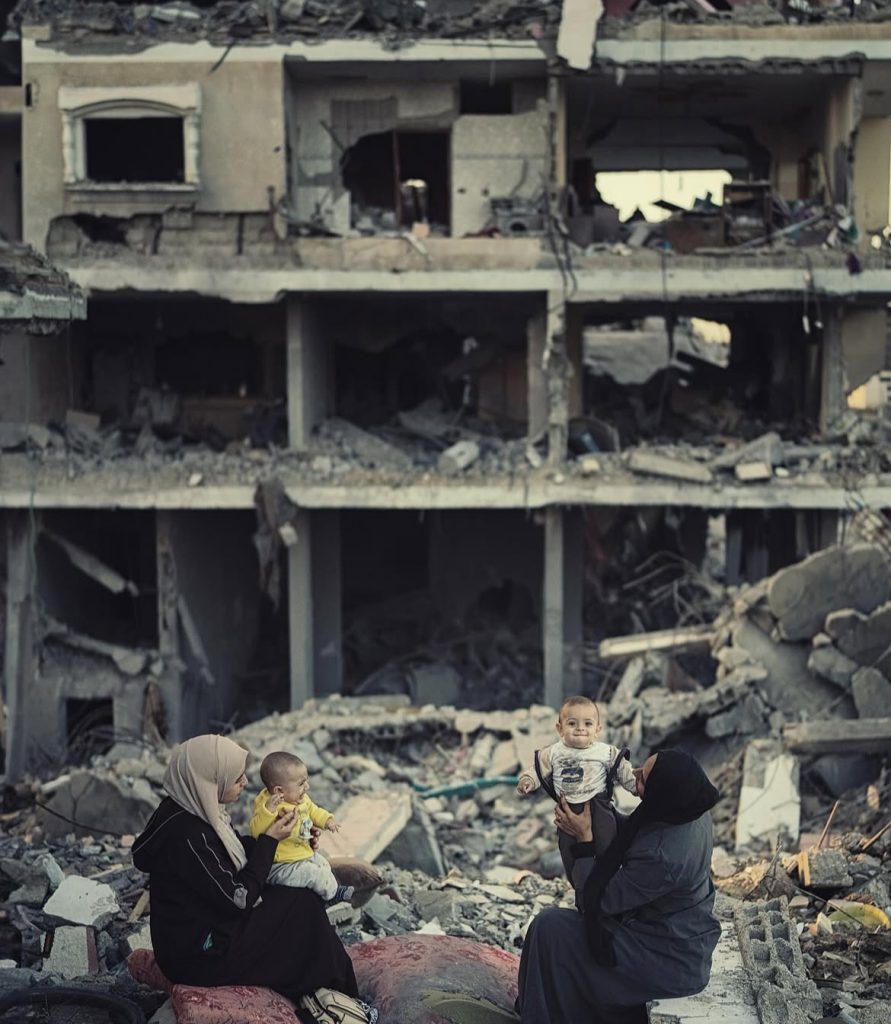
Moataz Azaiza, a Palestinian photojournalist capturing the devastation in Gaza, shared an image that speaks volumes about resilience in November 2023. In the photograph, two Palestinian mothers sit with their baby sons amid the rubble of what was once their home.
Despite the destruction surrounding them and having so little left, they cradle their children and try to make them smile, creating fleeting moments of joy. It’s a testament to the strength of Palestinian mothers—who, even in the face of unimaginable loss, find ways to protect their children’s innocence and preserve a sense of normalcy in the unthinkable.

This photo, shared by Bisan Owda, a Palestinian journalist who earned an Emmy for her AJ+ documentary “It’s Bisan from Gaza, and I’m Still Alive”, captures a quiet yet deeply moving sacrifice. It does not show the rubble or destruction, but the pain behind it is undeniable, a reflection of the unspoken costs of war.
Bisan shared her picture, writing: “I love my hair so much! I love the gorgeous curls on my head, but I couldn’t keep them. Today, I cut a lot of my hair because it was damaged due to the lack of clean water and hair care products that I could not carry from my beautiful room.”
For young women like Bisan, the war has robbed them not just of their homes, but of the simple joys and expressions of identity that many of us take for granted. Losing a cherished part of oneself, like her curls, may seem small to some, but it symbolizes the countless little pieces of life stripped away by conflict. It is a reminder that the pain of war is layered, physical, emotional, and deeply human.
Her words shed light on the invisible burdens carried by those living through conflict. While much attention is given to the destruction of buildings and loss of life, this moment reflects the quieter, deeply personal losses that come with war. For Bisan, cutting her hair was not just about practicality; it was a painful reminder of everything that had been taken, her home, her safety, and even the simple ability to care for herself.
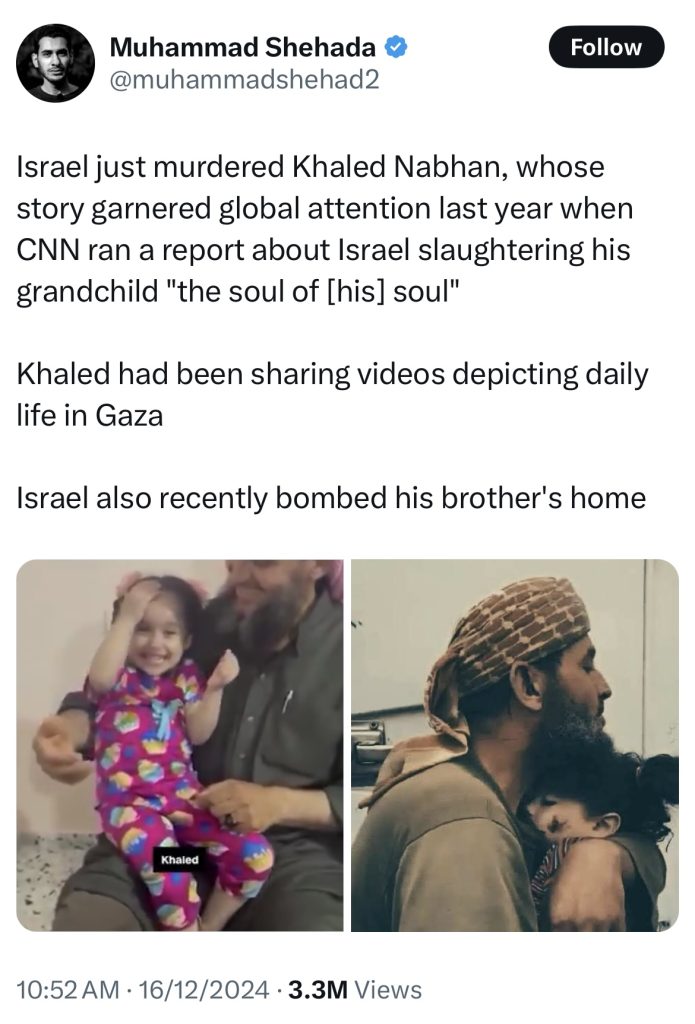
“The soul of my soul,” that is how Khaled Nabhan described his granddaughter after she was killed in an airstrike in November 2023. His words struck a chord with people around the world, offering a glimpse into the unimaginable losses so many families in Gaza have faced.
What made Khaled’s story so powerful was how deeply human it was. Beyond being a matter of numbers or headlines—it was about a grandfather who adored his granddaughter, a bond that war shattered in an instant. Through his pain, people saw the personal side of a conflict that often feels distant, reminding us that every life lost is a world of memories, love, and meaning erased.
In December 2024, Khaled himself was killed. For those who followed his story and grieved with him, it felt like losing someone they knew.
Khaled’s life and loss are a reminder of how war destroys not just homes and buildings but entire families, leaving behind an emptiness that’s impossible to measure.
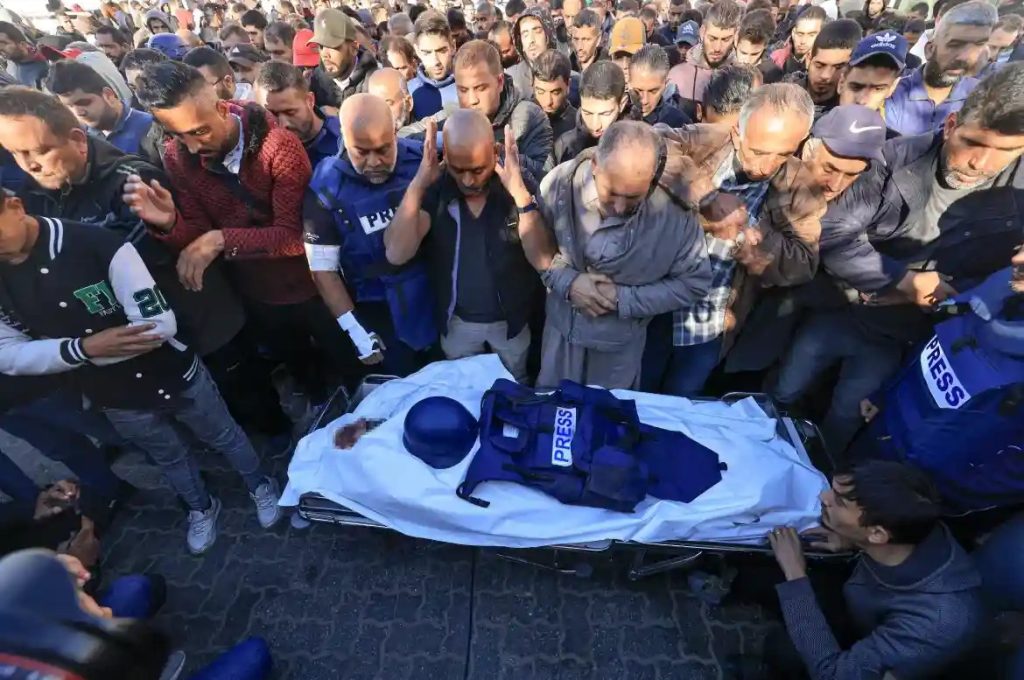
This photo captures the devastating toll the war has taken on journalists, who were deliberately targeted despite international laws meant to protect them. As of 23 January, at least 167 journalists and media workers have been killed in Gaza, the West Bank, Israel, and Lebanon, according to the Committee to Protect Journalists (CPJ). This marks the deadliest period for journalists since CPJ began documenting such data in 1992.
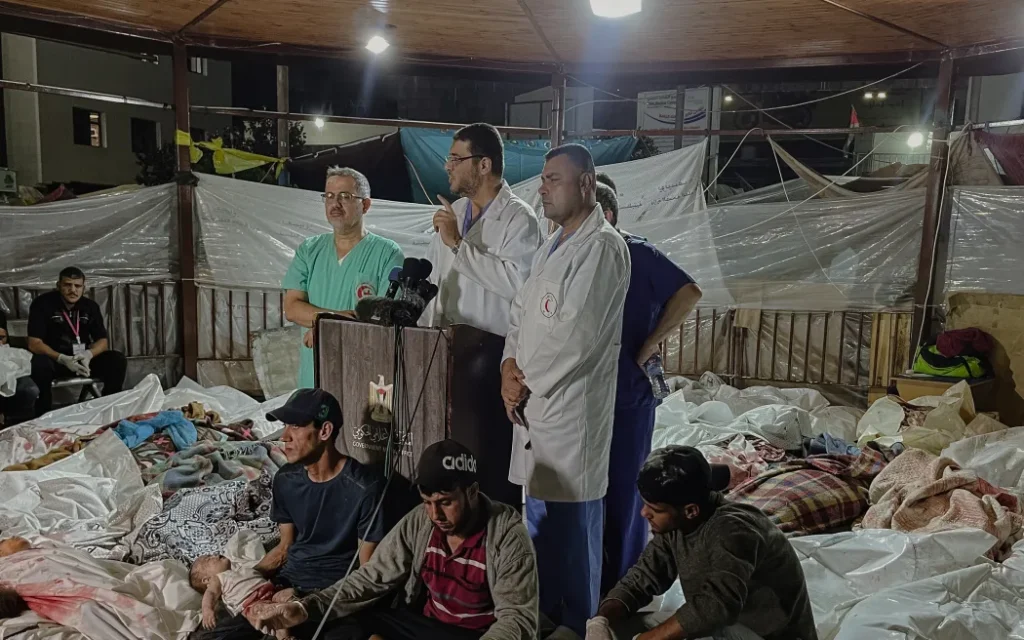
An image that went viral shows a press conference held amidst the lifeless bodies of martyrs in a hospital, capturing the anguish of medical staff, doctors, and citizens as they plead for the world to acknowledge the devastating toll of the war.
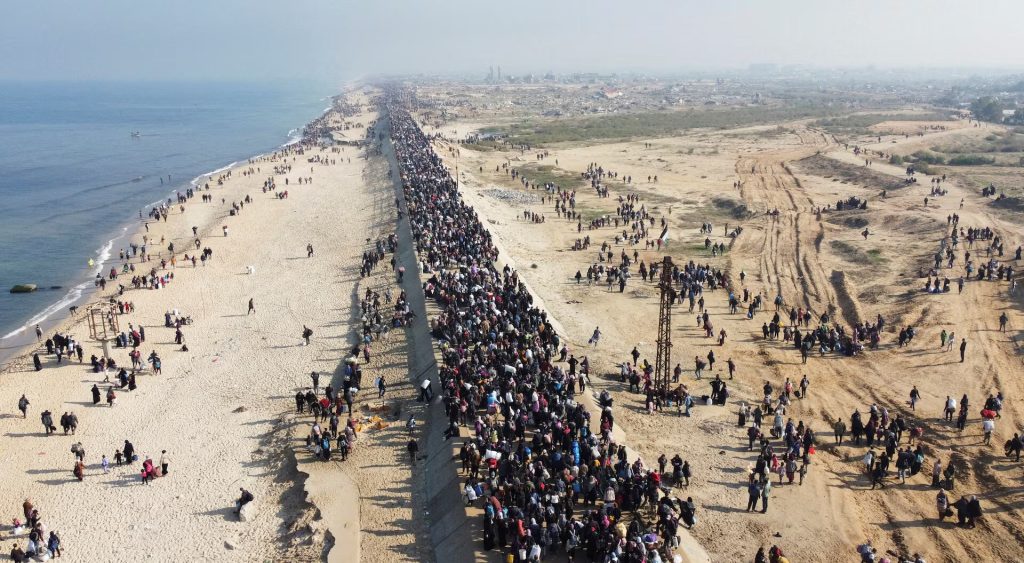
This photo captures a moment of both relief and heartbreak as thousands of Palestinians return home after the ceasefire was announced in January 2025, only to find their cities in ruins. Families walk through the wreckage, carrying the weight of both survival and loss. After months of relentless bombing, the question remains—what does “home” mean when so much has been destroyed?
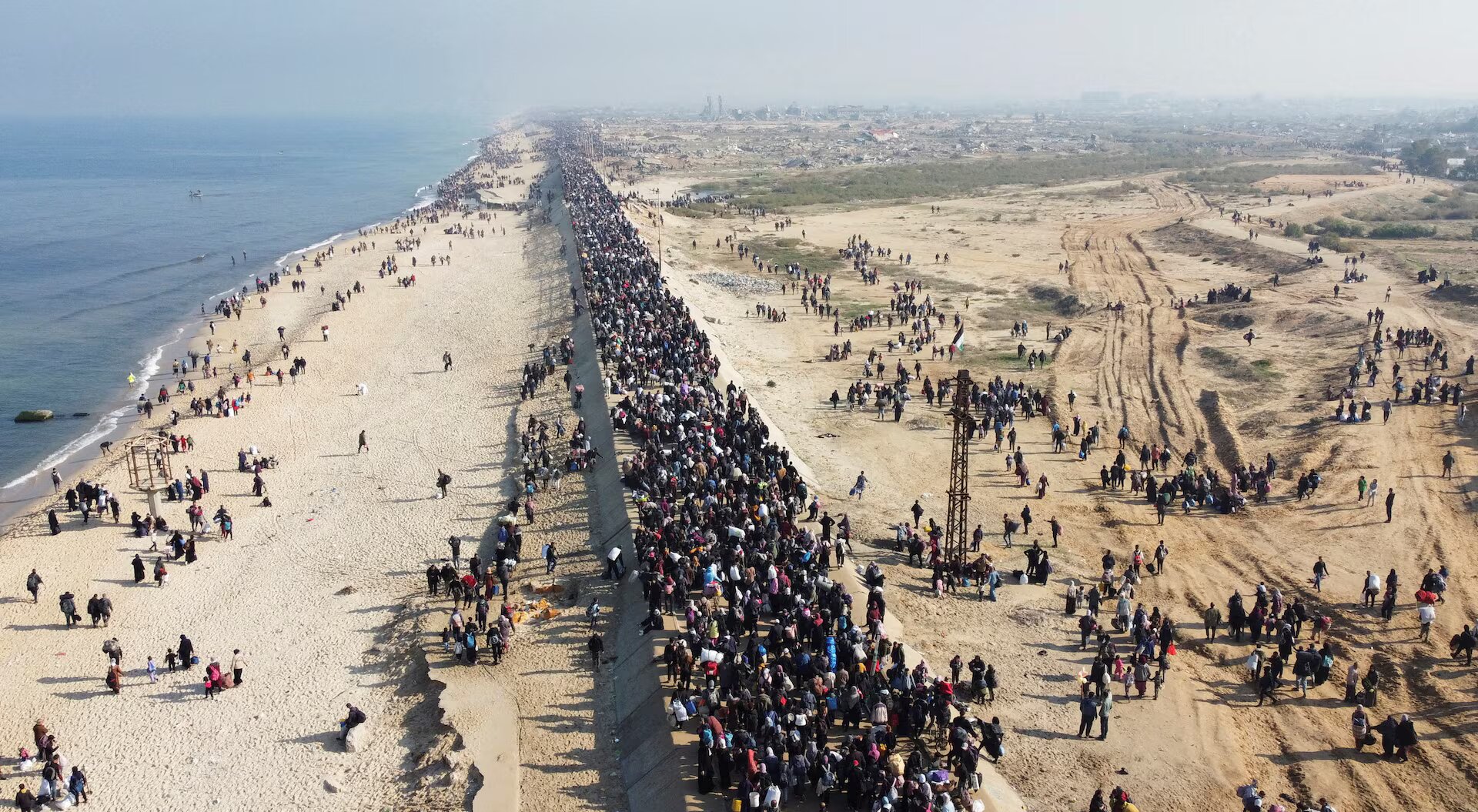
Comments (0)